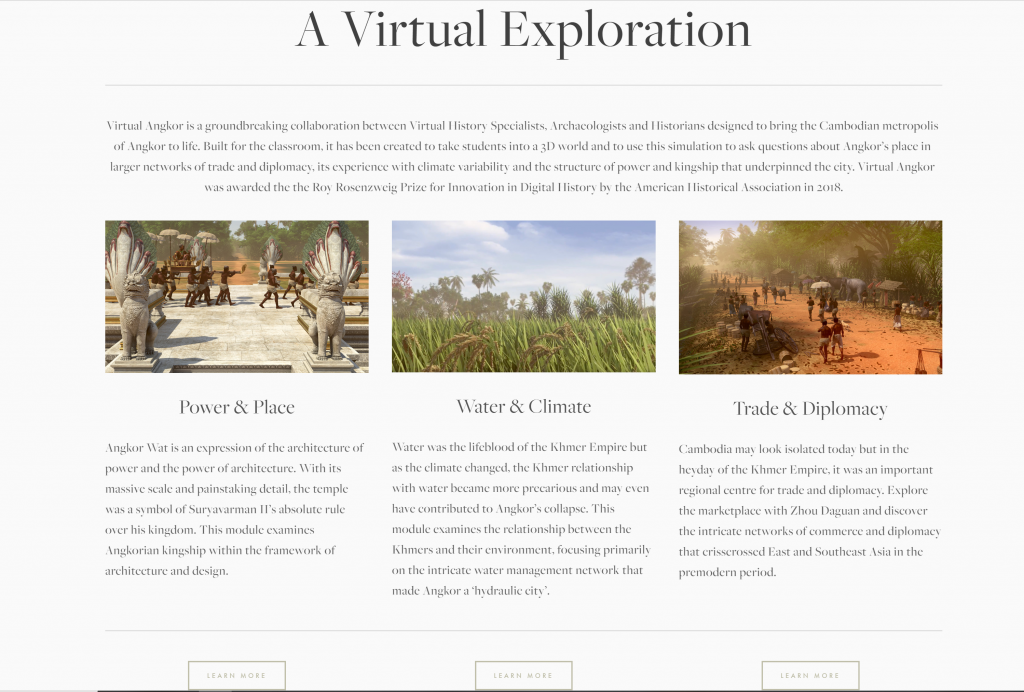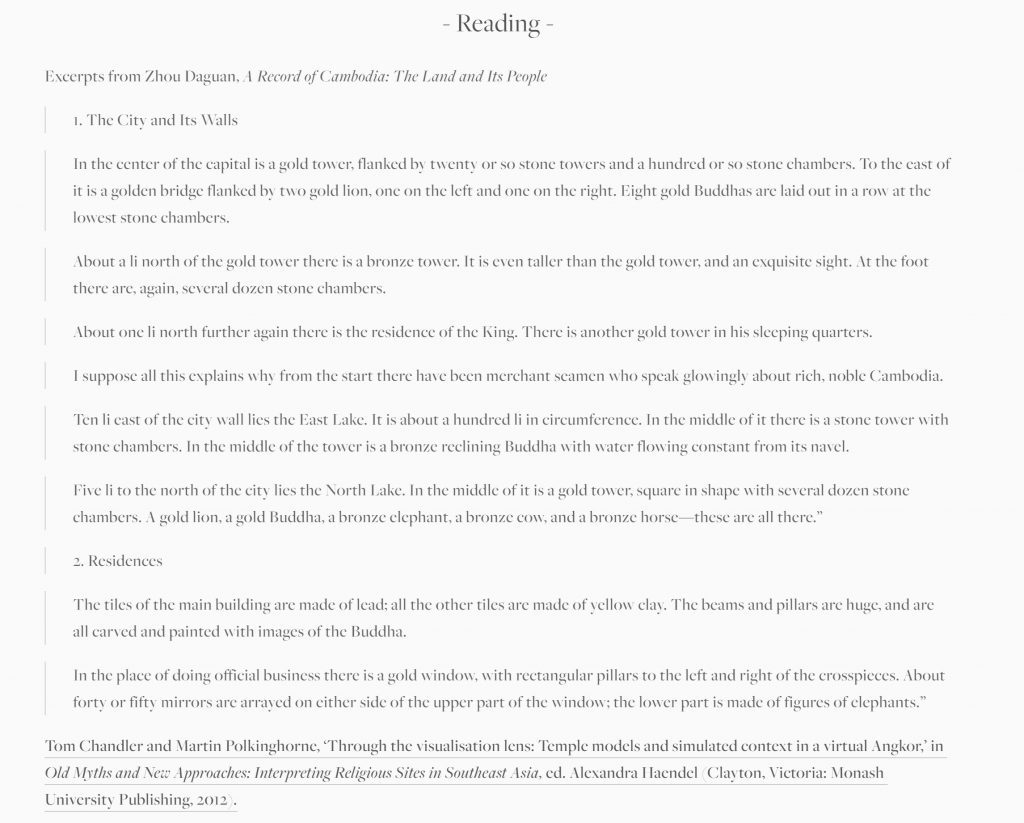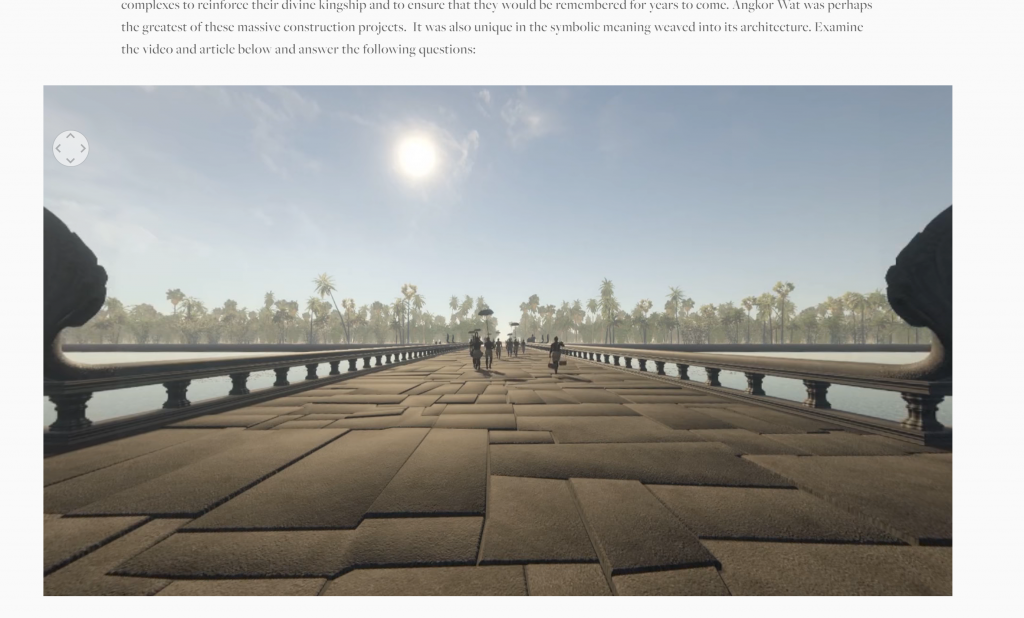Virtual Angkor is a groundbreaking collaboration between Virtual History Specialists, Archaeologists and Historians designed to bring the Cambodian metropolis of Angkor to life.
Built for the classroom, it has been created to take students into a 3D world and to use this simulation to ask questions about Angkor’s place in larger networks of trade and diplomacy, its experience with climate variability and the structure of power and kingship that underpinned the city.
https://www.virtualangkor.com/

Let’s dive deeper into Virtual Angkor project and use Miriam Posner’s method to identify this project’s components from three aspects:
- Sources (assets)
- Processes (services)
- Presentation (display)
Sources:
Virtual Angkor cited many historical contexts for which their whole rebuilt project was based on. These texts not only served as useful external materials for teaching modules, but also added the whole Virtual Angkor project’s reliability with historical evidences.

Processes:
Virtual Angkor project was mainly based on Zhou Daguan’s A Record of Cambodia, a first-hand account written by the Chinese diplomat Zhou Daguan describing his stay in Angkor from 1296 to 1297. Due to recent careful translation, researches analyzed and used Zhou’s experience as an outsider to the Khmer Empire to reproduce Angkor Kingdom with 3-D modeling. They collaborated with professional Archaeologists and Historians to bring the Cambodian metropolis of Angkor to life.
Presentation:
Virtual Angkor spent huge amount of time using 3-D modeling to rebuild the ancient Angkor’s different aspects for audiences. They inserted 360-degree videos in each section to invite readers get immersed in the ancient Angkor.

To summarize the Virtual Angkor digital humanity project, its goal is to bring the Cambodian metropolis of Angkor to life. The project is heavily archaeology and history based. It is a teaching project built for the classroom, aiming to take students into a 3-D world and to use this simulation to ask them questions about Angkor’s history, geology, and social structure.